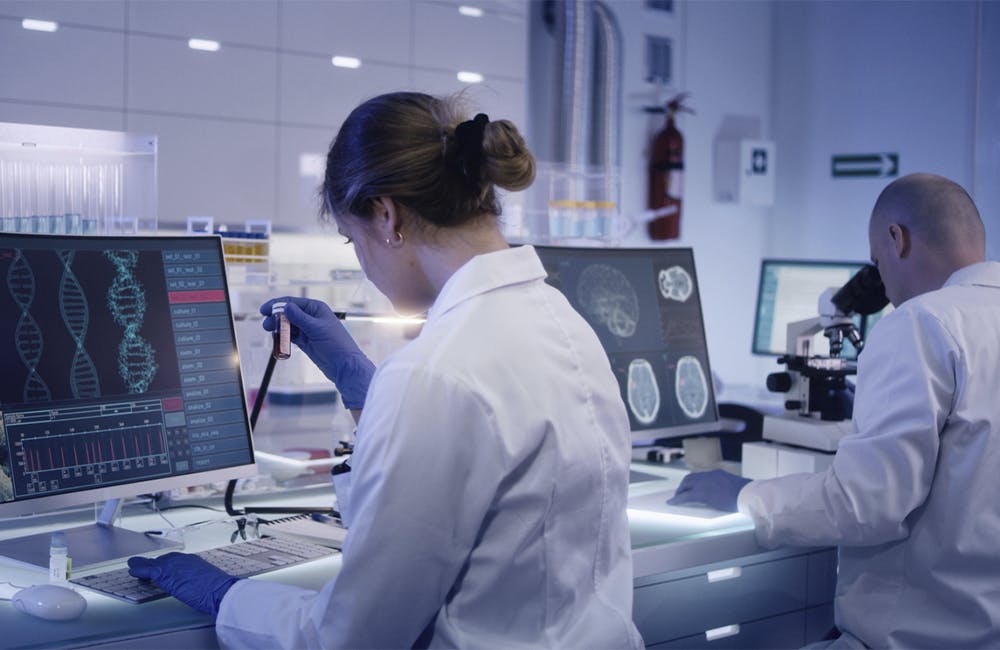Health Agencies Eye Collaboration in Adopting New Technology

Technology leadership across the federal government is looking to better facilitate the adoption of new capacities through developing frameworks for integrating these within existing services and institutional priorities.
Many of the recent modernization endeavors across the federal government have entailed the processing and management of large quantities of proprietary data, particularly through using these in analytic capacities or large research initiatives. This has led to a movement toward internal collaboration on ensuring this data is easily accessible and its management treated as a whole-of-enterprise consideration.
“Much of my experience at ServiceNow has been trying to find the data and understand what you have so you can manage it the right way. In the case of scientific organizations it might involve placing it somewhere where it’s easily accessible and something people can interact with it. Other times, it might involve understanding what data you have so you can secure it properly, and make sure that it’s protected. It’s really based on the mission and that key understanding what and where your data is,” said Jonathan Alboum, federal CTO at ServiceNow, at the GovCIO Media & Research Infrastructure: Health IT event.
This has necessitated a newfound degree of cross-departmental collaboration where teams are engaged in shared management of data analysis, ultimately creating a more refined and comprehensive approach to research initiatives that allow them to be better replicated and their insights shared across the agency.
“We are doing this increasingly with one of our [genomics research information] systems that we built, which allows precision medicine for our patients in the clinical center. We sequence the full genomic sequence of every patient who is admitted to the clinical center and provide genetic counseling,” said Mike Tartakovsky, CIO of the National Institute of Allergy and Infectious Diseases (NIAID). “Our physicians are working together with the genetic counselors, providing advice and explaining the outcomes or the analysis of the sequences.”
A similar approach is necessary for large-scale enterprise modernization, particularly the dual process of speaking with major stakeholders and understanding the likely technical needs of individual departments that might end up working in concert on large projects enabled by these same modernized IT systems.
“It really behooves us to do a lot of communication with each side to understand what their needs are. It’s something we did when we undertook a three-year review of our legacy applications. What we found is that roughly about 40% of the old applications had functions that were not being used because things had changed so drastically. You have to make sure you’re giving them what they need, sitting down with them, talking to them and dialoguing with them,” said La’Tanya Burton, CIO at National Institute of Arthritis and Musculoskeletal and Skin Diseases (NIAMS).
This model of preemptive analysis and discussion is also vital for ensuring resources and federal funding are used as efficiently as possible, avoiding the kind of overspend and bloat that can sometimes occur during large-scale tech modernization.
“It comes down to prioritization and how these things impact the organization because you can’t do everything. The budgets are always very limited. I think it’s important that IT has a seat at the table and can talk about prioritization and resources,” Alboum said.
This is a carousel with manually rotating slides. Use Next and Previous buttons to navigate or jump to a slide with the slide dots
-

Energy Researchers Aim For Holistic Approach to AI Issues
A new center at the Oak Ridge National Laboratory is looking at under-researched areas of AI to better understand how to secure it.
2m read -

5 Predictions for AI in Government Technology
Federal agencies are setting plans in motion not only integrate artificial intelligence into their enterprises, but also ensuring the data and algorithms that power these systems are fair and ethical.
David Egts, field CTO for MuleSoft Global Public Sector at Salesforce, breaks down the five predictions he has for AI in 2024. Egts highlights ways government leaders can prepare their agency and workforce to innovate for resilience, augment teams with AI and automate predictive AI to augment generative AI.
-

How Agencies are Upskilling the Workforce in AI
Federal officials are putting in place new training and education methods to ensure its overall workforce understands the technology.
3m read -

Building Better Data Governance Across FDA
The agency is using emerging technology to tackle its data challenges.
19m listen








